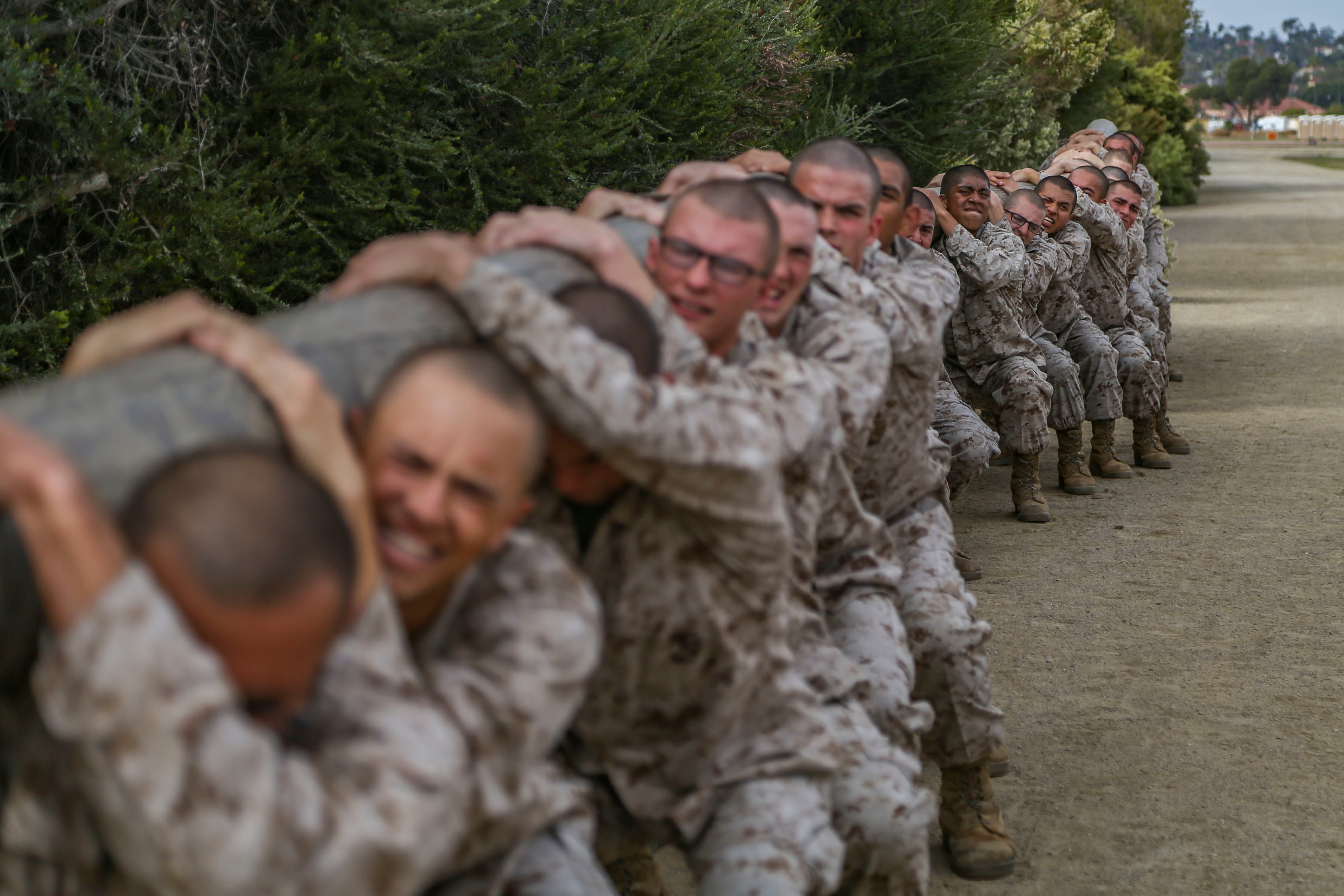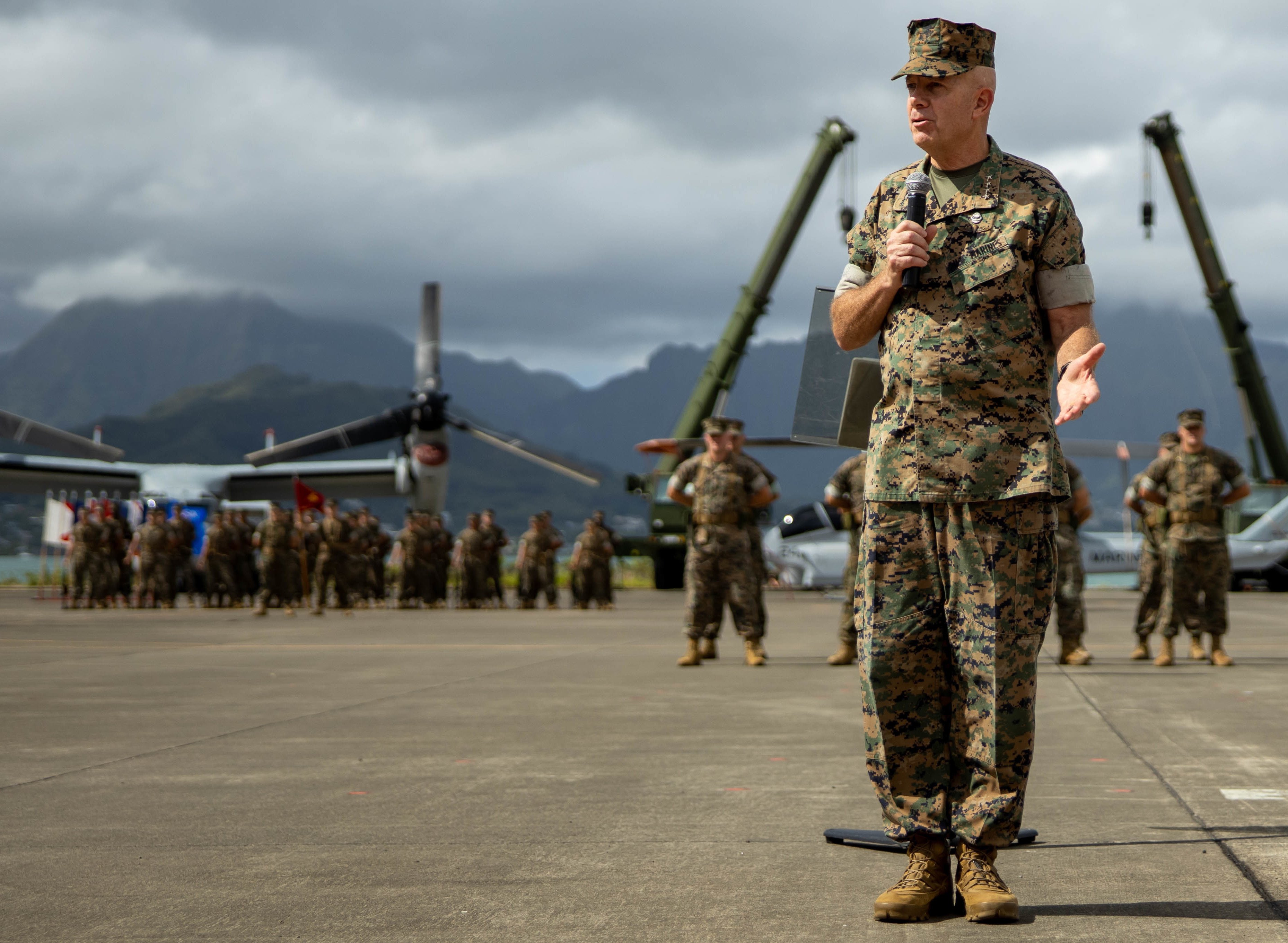
This story has been updated to correct the name of Shannon Razsadin’s organization.
When it comes to military recruiting, economist Beth Asch is an optimist. Asch has been studying military recruiting for almost 40 years, during which she has seen good recruiting years and bad ones.
Each time a new challenge arises, it’s treated like a crisis, she said during a Heritage Foundation discussion Tuesday. In the 1990s, recruiting was affected by the dot com boom when more people were being hired by the growing tech industry, Asch said in a November interview with USNI News. In 2005, a stronger economy and the war in Iraq led to less interest in joining the services.
But history shows that recruiting challenges can be overcome, Asch said, suggesting that the current recruiting issues are no different.
“Invariably, it can take a while,” she said. “It can take a lot of resources, it will involve mistakes, and it can be quite costly. And that has to be reckoned with but I am optimistic that things will get back on track. I mean they have to.”
Top military leaders have suggested that the strong job market might be the cause for the current recruiting woes, suggesting it can be difficult to attract talent who also have opportunities to work for large box stores like Amazon.
But a lack of recruits eligible to serve and decreased trust in the military, instead of a strong job market, are likely the leading factors for recruitment troubles, the top Marine Corps officer suggested in a November article.

“The Marine Corps is struggling to recruit talented young Americans in a competitive economy and from a society increasingly distant from the military,” Marine Corps commandant Gen. David Berger wrote in a piece for Naval Institute’s Proceedings. “And we are not alone; all the services are experiencing similar challenges. This concerns me both as the Commandant and as a member of the Joint Chiefs of Staff, because the Marine Corps relies on the other services, and they rely on us, across a web of interdependencies.”
The Marine Corps met its Fiscal Year 2022 recruiting goals, bringing on 33,210 enlisted active-duty Marines. But Berger, and other military leaders, have raised concerns that the branches won’t continue to meet those goals.
The Navy, which just barely met its recruitment goals in FY 2022, raised its age limit for new recruits last month as one way to increase the pool for eligibility. The sea service is also offering enlistment bonuses, a tactic the Army and Air Force also use.
A low unemployment rate in the United States has been one of the most cited reasons for the more difficult recruitment environment, but Berger argues that while it might be a contributing factor, it deserves less of the blame.
“Yet, some of our deepest challenges are chronic, indicating that the strength of the economy may be less critical than commonly thought,” Berger wrote. “For example, the Marine Corps has struggled—in good economic times and bad—to produce and retain an adequate number of pilots, even for the newest, most modern aircraft.”
The commandant, in his article, also evaluates the shrinking pool of eligible candidates. Most recent numbers suggest that 77 percent of Americans between the ages of 17 and 21 are not eligible to serve in the military, retired Rear Adm. Robert Besal, who works with advocacy group Mission Readiness, told USNI News.
The top three reasons for ineligibility are failure to pass entrance exams, health concerns and prior criminal activity, including drug abuse. One of the main health concerns is childhood obesity, which Besal said counts for 30 percent of those who are ineligible.
Mission Readiness is attempting to fix the pool of eligibility by trying to get funding for educational and nutrition programs, Besal said, but that requires getting congressional and other legislative officials to think in the long term.
Programs that would help childhood obesity and failure to pass entrance exams should start with children as young as three years old, Besal said. But the payoff will not be for another 15 years, when that child becomes eligible for service.

But while Mission Readiness looks at what can be done for the future, there are limited options for the services right now to fix the ineligibility problem, Berger wrote.
“Military leaders have few levers to pull to increase the number of Americans eligible for service, and the biggest and most immediate lever—lowering standards—is not one military leaders or most Americans want,” he wrote. “To effect enduring change requires understanding and addressing the declining propensity to serve.”
The economy can contribute to recruitment challenges, but it is a cyclical factor, Asch, who is a senior economist at RAND, told USNI News
Historically, when there is low employment, it’s harder for the military to recruit, she said in an interview Nov. 2. This could be the case for the military right now, but it’s all speculation, she said.
“I don’t think it’s an either-or situation,” Asch said. “I think it’s a matter of understanding the array of factors that could be having an effect and then teasing out their relative importance and for what particular groups, under what circumstances.”
Berger also points out that recruitment challenges persist even when the unemployment rate is higher, which generally is associated with better recruiting, suggesting that the economy, while a factor, is not the sole cause for recruiting woes.
Berger pointed to a lack of trust in the military, a factor that Besal also highlighted.
The military used to be one of the most trusted institutions, Besal said.
“There’s been, I don’t want to just call them all scandals, but there’s been some missteps whether in the active force, whether individual or collective, and some things that should have never occurred,” Besal said. “And so I think that’s something that really will have to take a strain inside the service to straighten that up. Because I think that you’re gonna get fewer people listening to you when you make this plea.”
People have inaccurate views about the military, which does not help the trust issue, Asch said. As an example, people do not always know the difference between the branches of the military or what it means to be a noncommissioned officer.
“People have a lot of ignorance, and that’s increased,” she said.
That ignorance is similar between those who enlist and those who do not, but the difference is that those who choose military service have positive values associated with the military.
Trust in the military is a new problem, but it will take more resear

In Berger’s piece, he points to a shrinking pool of people who have familial ties to the services.
“A growing percentage of those serving in uniform have a close relative who also served (or is currently serving),” Berger wrote. “In other words, those who are most familiar with the military are most likely to enlist.”
This does play out in recruiting, Asch said, where many recruits do have a family connection.
However, this could hurt the military, as the Military Family Advisory Network’s most recent survey found that military members are increasingly less likely to recommend a military career to a family member.
There was an 11 percent drop between 2019 and 2021 among family members who would recommend service, said Shannon Razsadin, president and executive director of the Military Family Advisory Network.
Approximately 62.9 percent of military participants surveyed by Military Family Advisory Network would recommend military service to family members, according to the 2021 annual survey. That’s down from 74.5 percent in 2019.
The drop is attributed to low pay, leadership challenges, frequent moves that make it difficult on families, and military benefits that no longer outweigh the challenges that come with service, Razsadin said.
But Berger points out that the pool of eligible military recruits could shrink to those with a family connection if the military does not do more to reach out to those unfamiliar with the military, and the family pool could be shrinking as well.
“Definitely you’re pulling from a smaller pool, because when you had the draft, you know, everyone had the requirement of service,” Razsadin said. “And so these are people who are choosing to make the sacrifices, they’re choosing to serve. And so, of course, it’s gonna be a different percentage than if you had the draft and mandatory service requirements.”





